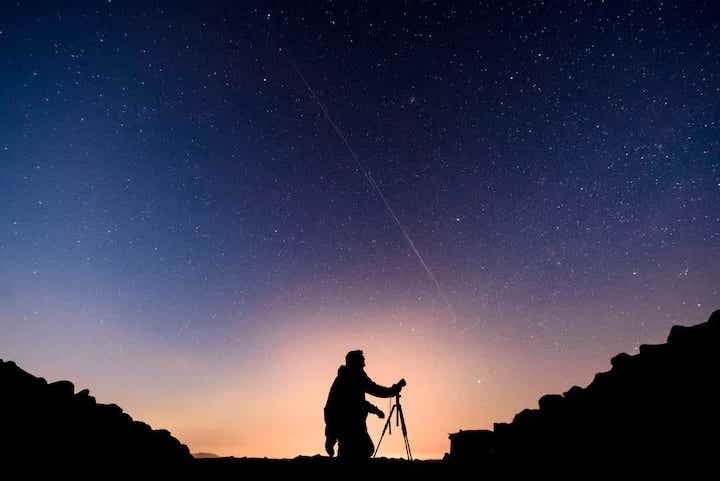25.12.2019

The SpaceX company has a visionary plan to provide global high-speed internet service using a network of orbiting satellites. But this lofty new communications enterprise known as Starlink may impose some heavy costs on Arizona residents and visitors.
Blessed with clear weather and favorable topography, Arizona has been a magnet for amateur and professional astronomers for more than a century. Home to top flight observatories, our state has long reaped the many benefits of proactive stewardship efforts to preserve valuable dark sky sites.
With 16 officially designated dark sky communities, parks and other locations, no place in the world matches the Arizona commitment to safeguarding the superb conditions that are essential for all levels of stargazing.
Bright satellites could obscure real stars
The coming swarm of Starlink satellites required to achieve the goal of global communications might be numerous and luminous enough to alter the appearance of the starry night sky. Should this risk become reality, the specially protected dark sky sites of Arizona will be the most severely impacted.
The Starlink satellites already placed in orbit are far brighter than engineers first estimated and are clearly visible to observers in dark sky locations. A few artificial stars in the sky would not be troubling, but the company is seeking approval to release tens of thousands of them into low-Earth orbits.
If those plans are carried out, authentic stars will be greatly outnumbered by artificial points of light and the constellations familiar to humankind since antiquity will be obscured. Instead of an increasingly rare, authentic touchstone to our human history and scientifically valuable window to the universe, the starry night sky Arizonans have worked so hard to preserve will be supplanted by a "megaconstellation" facsimile.
What if SpaceX's fixes don't work?
A night sky polluted with hordes of artificial stars promises to dismay naturalists, frustrate photographers and may turn out to be completely incompatible with the activities of professional astronomers. In addition to legitimate concerns over intangible quality of life issues, astro-tourism and astronomical research are major contributors to the Arizona economy, and a potential threat to the future health of these thriving industries must not be taken lightly.
Starlink engineers have found it necessary to alter their original plans to achieve challenging operational goals. The company acknowledges the unanticipated visibility problems and promises to address them by adding a special coating to reduce satellite reflectivity.
However, both new technical and legal territories are being explored here, making it important to ask what happens if a voluntary fix fails to eliminate the predicaments. For example, if a new veneer reduces reflectivity about 85%, it is possible a substantial fraction of Starlink satellites will still remain bright enough to be visible to the unaided eye and possibly interfere with professional astronomy.
Could corporate interests trump our rights?
If events reach such a point, who will have the final authority to decide whether the reflectivity reduction strategy was adequate? Will there be any recourse if the Starlink engineers, permits in hand, declare their mitigation efforts successful and forge ahead with their bold vision to network the entire world?
Other companies are pushing forward with their own plans to deploy mass-scale satellite networks. We can only wait to see if those projects impact our celestial environment.
Arizona has enormous interests at stake in these fast-emerging developments, and now is the time for the public and our leaders to ask hard questions about proposals that impact our shared, valuable resources.
If citizens are not alert, we may soon discover our fundamental rights and ability to decide which projects best serve the greater public interest have been usurped by ambitious private corporations.
Quelle: USA Today az central
